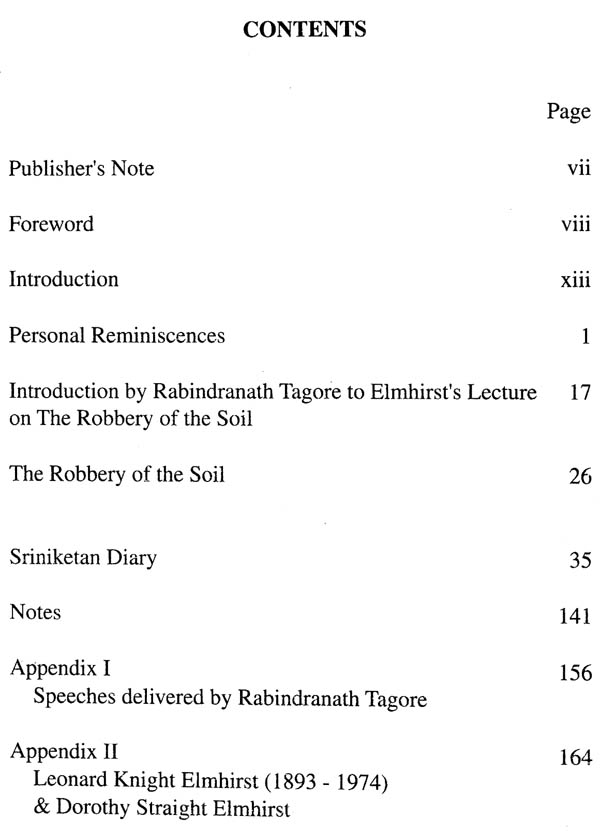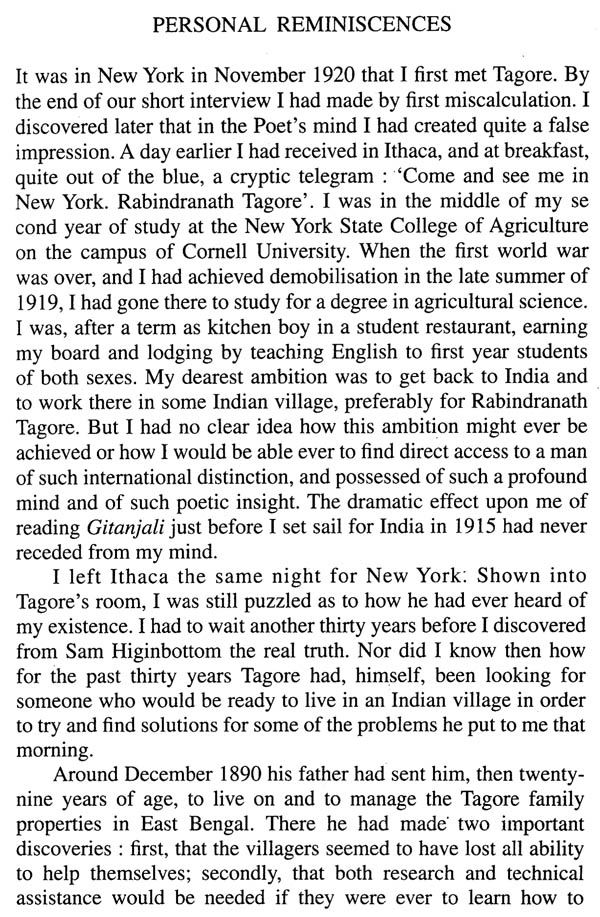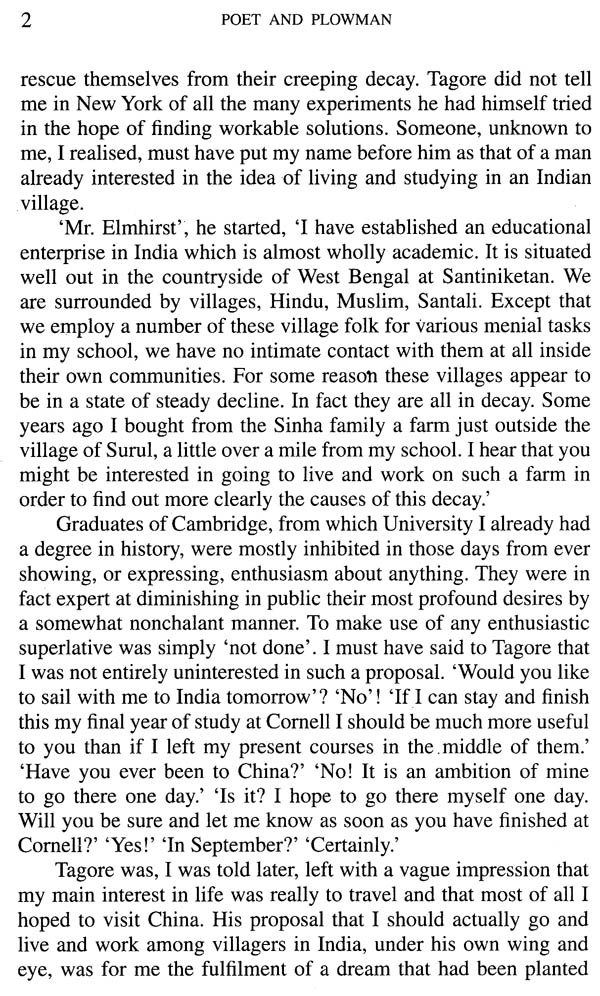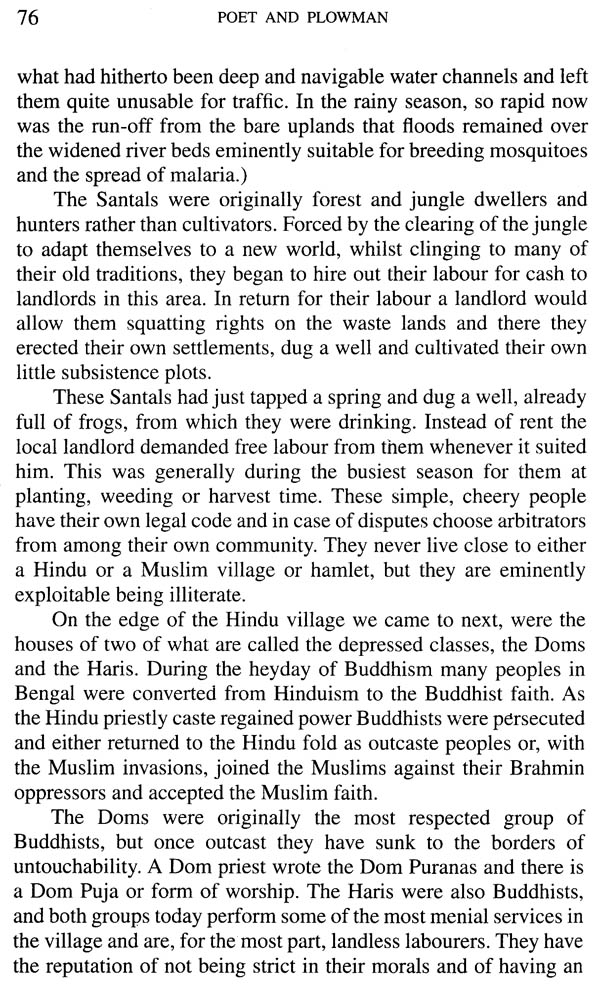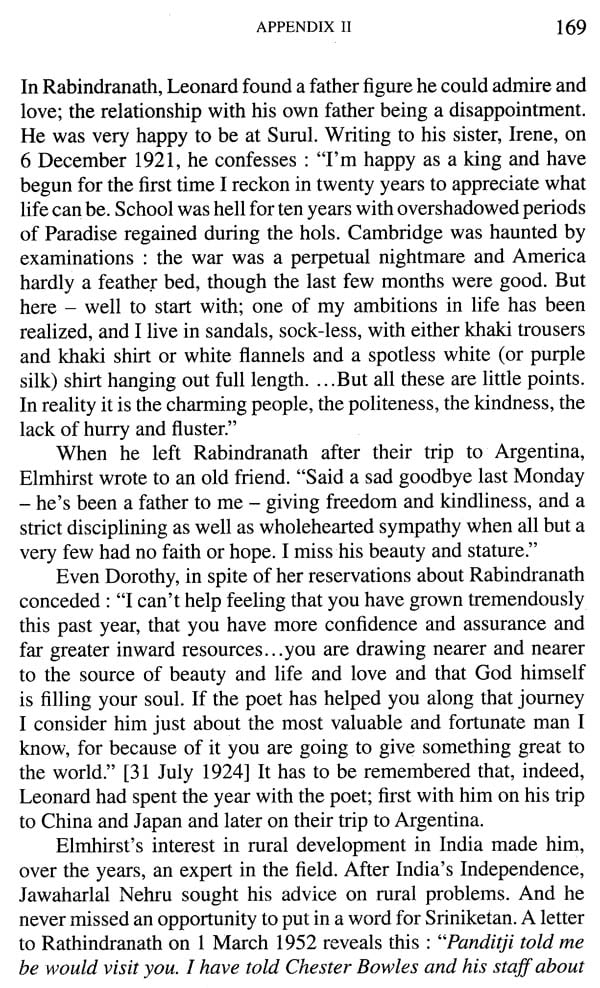
Poet and Plowman
Book Specification
| Item Code: | NAY473 |
| Author: | Leonard K. Elmhirst |
| Publisher: | Visva-Bharati, Kolkata |
| Language: | English |
| Edition: | 2008 |
| ISBN: | 9788175224216 |
| Pages: | 171 (10 B/W Illustrations) |
| Cover: | PAPERBACK |
| Other Details | 8.50 X 5.50 inch |
| Weight | 270 gm |
Book Description
For Rabindranath, the two experiments, pedagogic and agricultural, cultural and rural, were vitally linked. The very difference in their setting made the link more vital. What he tried to work out, at Santiniketan and at Surul, was an integrated programme in which culture of the mind and culture of the soil went hand in hand. That Santiniketan should grow as a cultural oasis in the midst of an arid waste of decaying humanity had never seemed right to him. How to build a living and fruitful network of communication between the two had long troubled him.
In early 1921 when the Poet was in New York he learnt of Leonard Elmhirst, a young Englishman, son of a Yorkshire Curate, who having done History at Cambridge was then learning Agriculture at Cornell. Having been invalided out of Mesopotamia during the first world war, Elmhirst had spent some months in India where he had got keenly interested in the problem of agricultural and rural development. Here was a young idealist with the right passion and the right scientific training which Tagore needed. He sent him a telegram to meet him in New York and promptly invited him to join him in India and help launch his experiment at Surul. The young man agreed, and a few months later, in November of the same year, duly arrived at Bolpur, true to his word.
Mr. Elmhirst arrived at Santiniketan in November 1921. The Poet asked him to go and see for himself the state of things in the villages. He placed at his disposal a few young men whom, the Poet said; he might train up as workers in village reconstruction. This, in brief, is the genesis of the Rural Reconstruction Department at Santiniketan. Elmhirst's initial difficulties were, indeed, very great. He had to fight against numerous obstacles in the shape of ignorance, lethargy, suspicion and social inhibitions of various kinds all of which he overcame with love and sympathy, patience and hard work. He went to the very root of the problem in so far as he attempted to break down the age-old social walls and infuse in the villagers a feeling of mutual respect and self-help. His devotion to work was an inspiration to the villagers as well as to the young band of workers for whom to work with Leonard had all the thrill of a big adventure. Mr. Elmhirst is the chief architect of Santiniketan which he built up with his own labour and later gave financial stability to the project with funds from his own resources.
Book's Contents and Sample Pages
